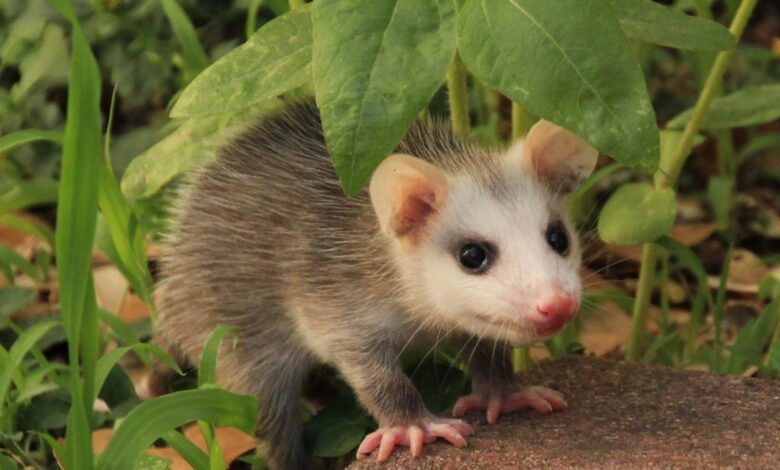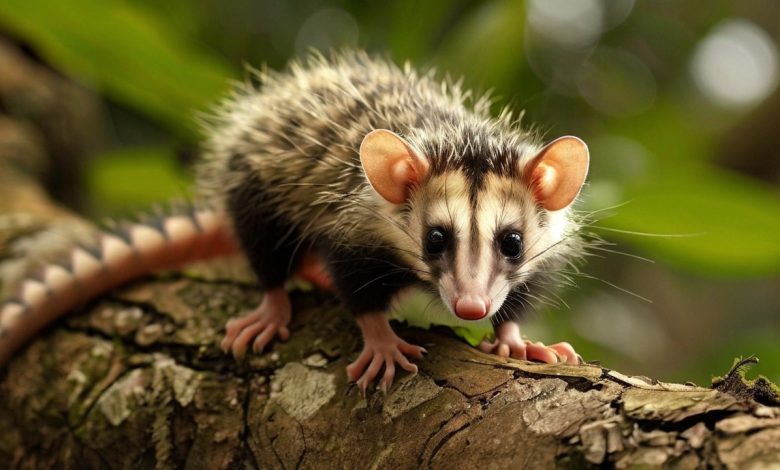Tñacuache: A Unique Creature in Mexican Folklore and Ecosystem

The tñacuache, commonly known as the Mexican opossum, is a remarkable creature that plays a significant role in Mexican culture and ecosystems. Found across various regions in Mexico, this nocturnal mammal is known for its adaptability, omnivorous diet, and resilient nature. Its cultural significance is equally intriguing, as it appears frequently in indigenous folklore and traditions, symbolizing wisdom, cunning, and resourcefulness. This article delves into the biological characteristics, ecological role, and cultural importance of the tñacuache.
The Biological Profile of the Tñacuache
The tñacuache belongs to the Didelphidae family, sharing commonalities with other opossums but also exhibiting unique traits that set it apart. Its small to medium size, sharp teeth, and prehensile tail make it an agile and skilled survivor in diverse habitats, from forests to urban areas. The prehensile tail, used for balance and gripping branches, is an iconic feature of the tñacuache, often contributing to its reputation as a clever and versatile animal.
Physiologically, tñacuaches have a keen sense of smell and hearing, which allows them to locate food and evade predators effectively. They are omnivores, feeding on a variety of foods such as fruits, insects, small animals, and even carrion. This varied diet helps maintain a balanced ecosystem, as tñacuaches contribute to seed dispersion and control insect populations.
Ecological Importance of the Tñacuache

The ecological role of the tñacuache is highly beneficial to its environment. By consuming a wide array of foods, tñacuaches help regulate insect populations and clean up waste, thus contributing to a healthier ecosystem. Their feeding habits aid in seed dispersal, which is crucial for plant growth and forest regeneration. As scavengers, they reduce the spread of disease by consuming dead animals, making them natural cleaners of their habitat.
Additionally, as a prey species, tñacuaches support the food web. They serve as a food source for larger predators like foxes, hawks, and owls. This balanced interaction between tñacuaches and other animals exemplifies the interconnectedness of ecosystems, with each species playing an integral role in maintaining biodiversity and environmental stability.
Cultural Significance of the Tñacuache in Mexican Folklore
In Mexican folklore, the tñacuache is celebrated as a symbol of cunning and survival. Stories and legends often portray it as a clever creature that can outwit predators and even steal fire for humankind. The tales surrounding the tñacuache reflect indigenous beliefs and the admiration for its survival skills, resilience, and intelligence.
One popular tale describes how the tñacuache obtained fire. According to legend, the animal stole fire from the gods by hiding embers in its tail and bringing warmth to the human race. This myth not only illustrates the animal’s intelligence but also its willingness to risk itself for the benefit of others. Such stories have ingrained the tñacuache into the cultural consciousness of Mexican communities, where it is respected and often considered a bearer of wisdom.
Adaptation and Resilience of the Tñacuache
The tñacuache has adapted remarkably well to both rural and urban environments. In cities, it can be seen foraging in garbage bins, surviving on leftover food, and making homes in parks and residential areas. This adaptability speaks to the species’ resilience, showcasing how it has learned to thrive in environments altered by humans.
Despite facing threats from urbanization and habitat loss, the tñacuache continues to survive, illustrating the animal’s inherent adaptability and strength. This resilience has only enhanced its mythical status in folklore, further solidifying its reputation as a resourceful creature.
Threats and Conservation Efforts
Like many wildlife species, the tñacuache faces various threats, particularly from habitat destruction and urban expansion. Although it is not currently listed as endangered, its population is affected by these changes. Conservationists argue that protecting the tñacuache’s habitat is crucial to preserving biodiversity and the ecological balance in regions where it plays a role.
In recent years, wildlife organizations in Mexico have initiated efforts to raise awareness about the ecological importance of the tñacuache. Educational programs aim to dispel misconceptions about animals and promote coexistence between humans and tñacuaches. Through such initiatives, conservationists hope to ensure the survival of this unique species and maintain the health of ecosystems across the country.
The Role of the Tñacuache in Modern Mexican Society
The tñacuache continues to hold a place in modern Mexican society as both a cultural icon and a crucial ecological contributor. Environmental campaigns sometimes feature the animal as a symbol of biodiversity, reflecting its importance in both ecological and cultural contexts. Artists, storytellers, and educators also celebrate the tñacuache in their works, helping younger generations appreciate its role in nature and heritage.
This animal serves as a reminder of the deep connection between the Mexican people and the natural world, emphasizing values of respect, adaptability, and the need for environmental preservation.
Conclusion: Embracing the Legacy of the Tñacuache
The tñacuache is more than just an animal in the Mexican landscape; it is a symbol of endurance, intelligence, and ecological harmony. Its presence in folklore and vital role in ecosystems underscore the importance of respecting and conserving this species. By understanding the cultural and environmental value of the tñacuache, we recognize the broader significance of biodiversity and the need to protect wildlife for future generations.




